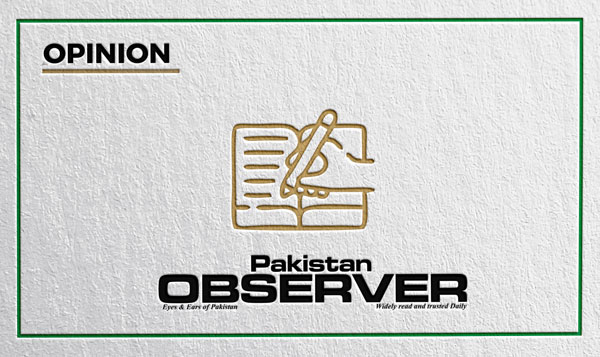Articles and letters may be edited for the purposes of clarity and space.
Iran and Israel
Iran and Israel, once considered diplomatic partners, have evolved into archenemies with a complex and contentious relationship defined by shifting alliances, ideological differences and ongoing conflict.
Initially, Iran was among the first Muslim countries to recognize Israel’s establishment in 1948, and both nations maintained diplomatic ties and flourishing trade relations, largely centred on oil. However, the dynamic dramatically changed following the Iranian revolution in 1979.
The Iranian revolution led by Ayatollah Khomeini shifted Iran’s focus towards Islam and Palestinian liberation, prompting the severance of diplomatic ties with Israel. This initiated a bitter rivalry marked by covert operations, proxy conflicts and hostile rhetoric. Despite severed ties, both nations are accused of supporting militant groups and carrying out clandestine attacks, escalating tensions.
The US unwavering support for Israel has further complicated the Iran-Israel rivalry. The US has consistently provided military, financial and diplomatic assistance to Israel, viewing it as a key ally in the Middle East. Iran perceives Israel’s close ties with the US as a threat to its regional influence and security, further fuelling animosity between the two nations.
Recent events have underscored the volatile nature of the Iran-Israel relationship. The April 2024 drone and missile attack launched by Iran against Israel, in retaliation for an Israeli action in Syria, highlights the potential for escalation and wider regional conflict. Such incidents contribute to the ongoing cycle of hostility and mistrust between the two nations with broader implications for stability in the ME.
In conclusion, the Iran-Israel relationship is characterized by deep-seated animosity, fuelled by ideological differences, geopolitical rivalries and historical grievances. Despite occasional diplomatic overtures, the underlying tensions remain unresolved, posing significant challenges to regional peace and security.
SAEEDA SUMMBAL
Karachi
Unity amid diversity
In the 17th century, the local Hindu King Madan Roy had donated the land to Pir Ghazi Mubarak Ali for setting up the iconic mazaar in Ghutiari Sharif — Bengal’s South 24 Parganas district — after the latter cured the former from a serious bout of illness.
Today the mazaar forms a revered pilgrimage or happy meeting ground of Hindus and Muslims alike! Or the Patachitra art (hand scroll painting) of Bengal’s Medinipur where Durga Shiva Ram Sita come alive through the brush of Muslim artists since centuries! Indeed this has been the tradition of Bengal since centuries bearing the humanitarian legacy of Bangaliana — handed through generations by Lalon Fakir Rabindranath Tagore Kazi Nazrul Islam! During my time in college hostel, two of our close friends used to invite us to their village to celebrate Eid, a remarkable journey on the roof of the bus through the green fields to reach the village amidst coconut trees and bamboo groves.
A small simple white mosque surrounding which villagers used to be in their cheerful best! Not to forget the unfathomable warmth, love and hospitality of the parents, family members and neighbours of our friends.
Not to forget how our seniors of Islamic vintage used to guide us during the celebration of Saraswati Puja in our hostel, ending with a pre-Eid celebration in Howrah district. In an Iftar gathering comprising more than 500 people, food was arranged by the Hindu women! Fruits for the Iftar spread were chopped through iron blades which are used by the ladies during preparation of Lakshmi Puja offering at their homes!
Let this shared living be the only antidote to the marauding juggernaut of communal polarisation. Let the merchants of hatred, going all-out to divide humanity in terms of man-made religion, be exterminated from the global society for ever.
KAJAL CHATTERJEE
Kolkata, India
Youth exodus
In Pakistan, the youth, comprising 60% of the population, holds immense potential for driving economic growth. However, economic challenges like high inflation and unemployment are pushing them to seek opportunities abroad, exacerbating the brain drain phenomenon. This trend reflects a loss of faith in the country’s future due to governance issues and economic instability.
Urgent action is needed from authorities to address these concerns and prioritize inclusive economic strategies. Investing in education, technology, and entrepreneurship, while involving youth in governance, is crucial to instil confidence and optimism.
By retaining young talent and fostering a sense of hope, Pakistan can transform the narrative of youth migration into one of opportunity within their homeland. Creating an environment that values and nurtures the aspirations of its youth is paramount to ensuring a prosperous future for the nation.
Through concerted efforts to address their concerns and empower them to contribute meaningfully to society, Pakistan can harness the full potential of its demographic dividend and pave the way for sustainable growth and development.
GULAB UMID
Turbat
Box letter
Price hike
The devaluation of currency and austerity avalanche, imposed by the IMF in order to stabilize the economy of the country, has eroded the purchasing power of people. Consequently, they often find themselves on the inflationary treadmill. As per Pakistan Bureau of Statistics, the country experienced its highest ever price hike in FY 22-23. As a result, many of the young people are not ready to roll up their sleeves and serve the country. Instead, they are migrating to other countries in order to find their new homes. This puts the country behind the eight ball as it’s losing one of its major assets. In the same vein, price hike is causing many other challenges like contributing to the poverty premium, widening the wealth gap chasm and hindering the establishment of new businesses. Consequently, price hike is serving as a catalyst for other challenges, thus making it the worst of all worries.
MARIA ZULFIQAR
Islamabad










